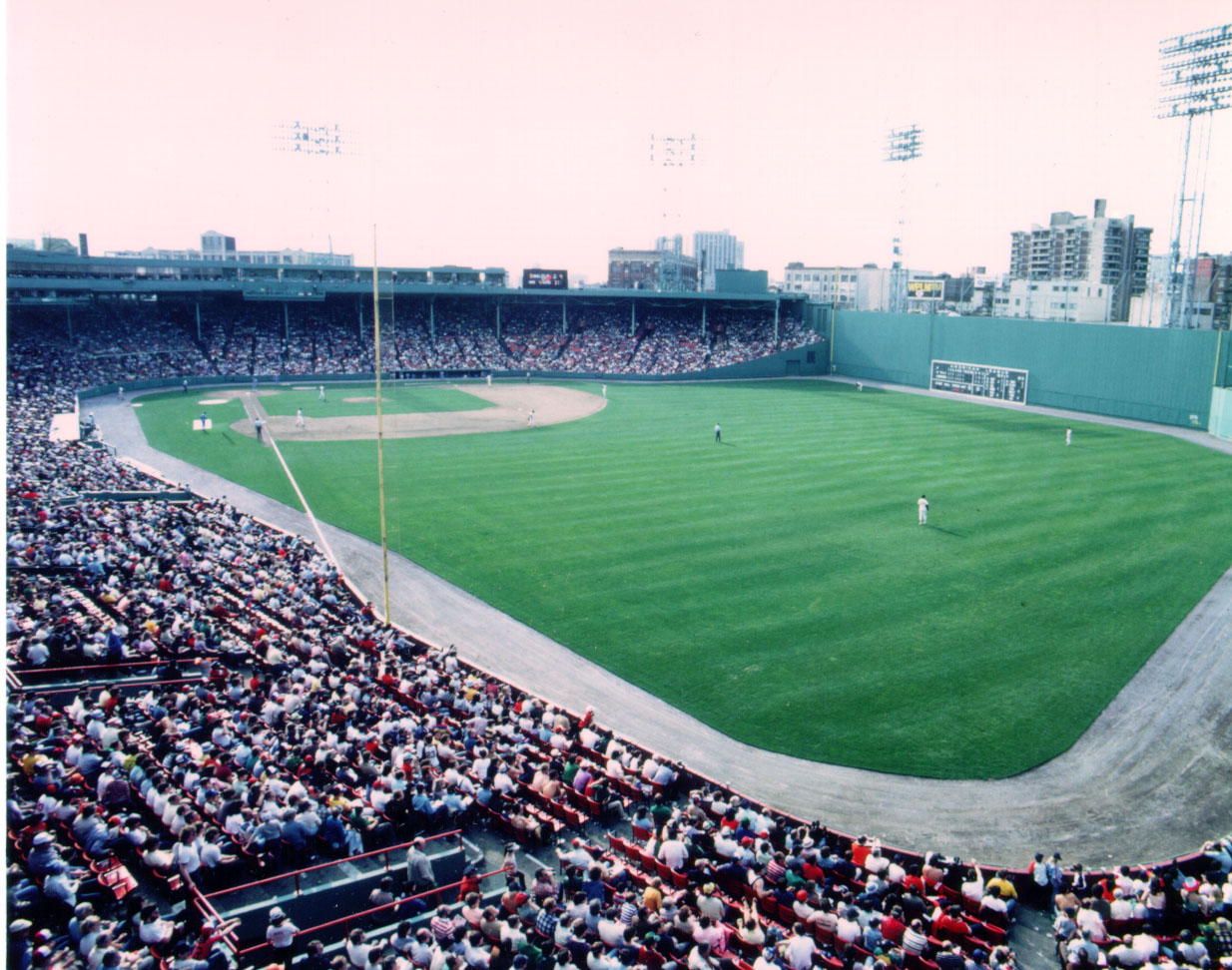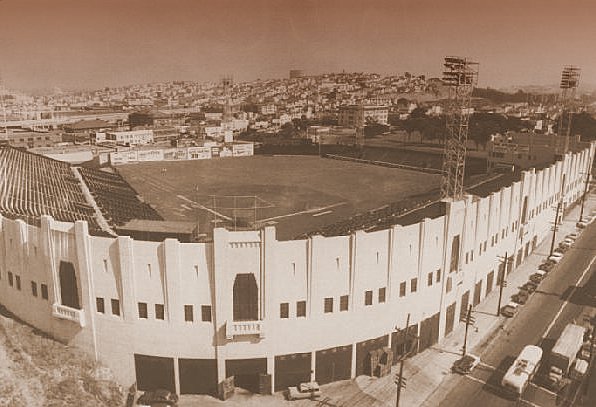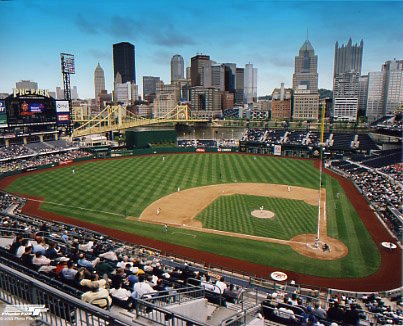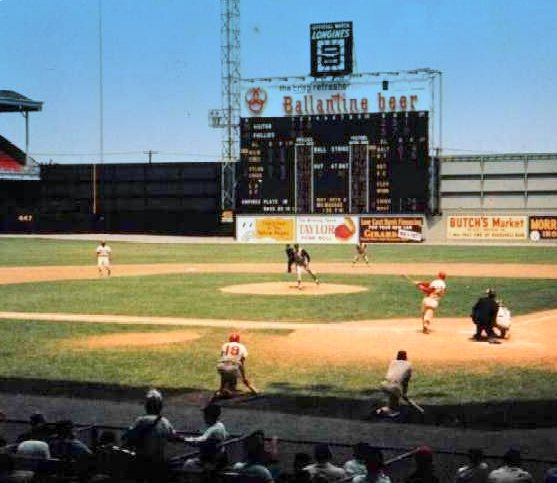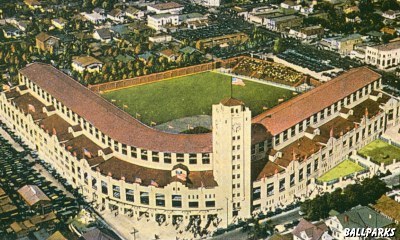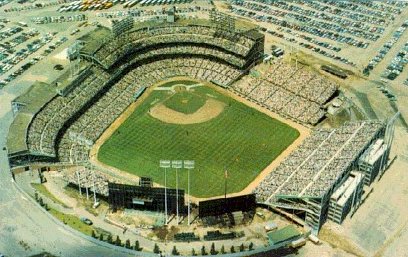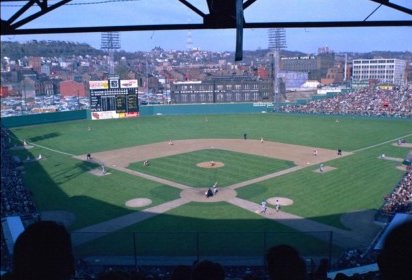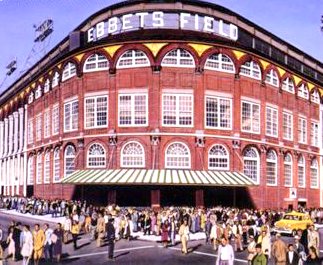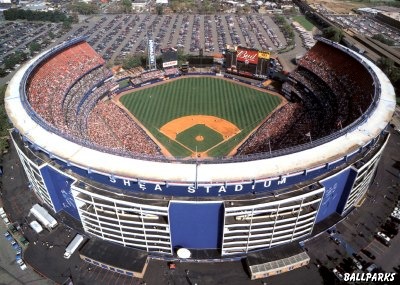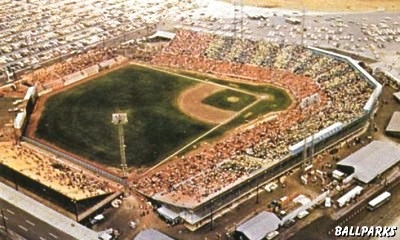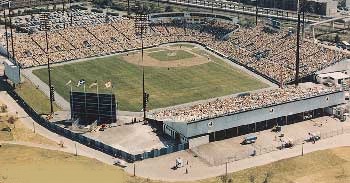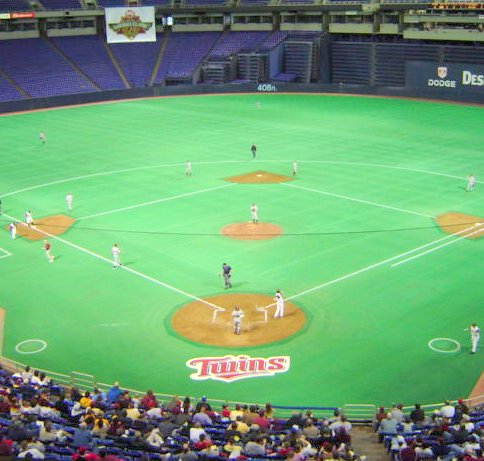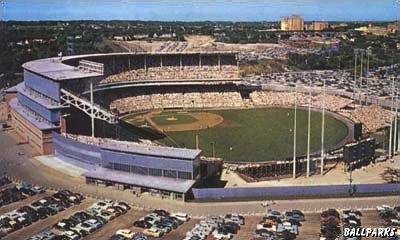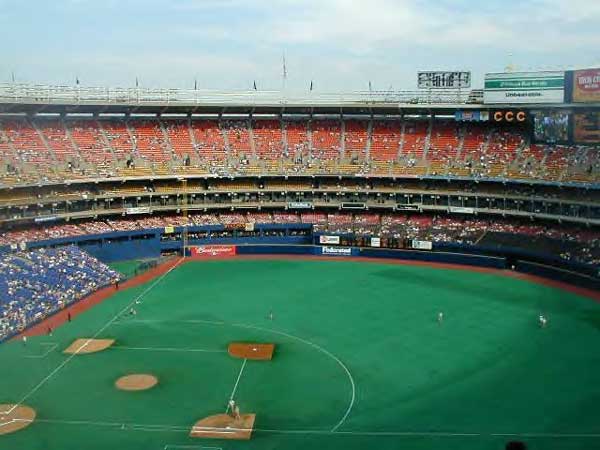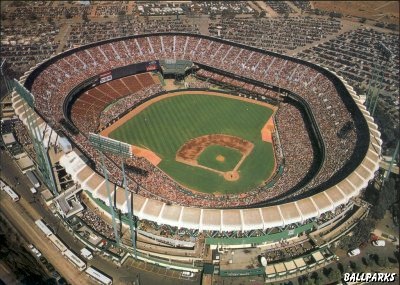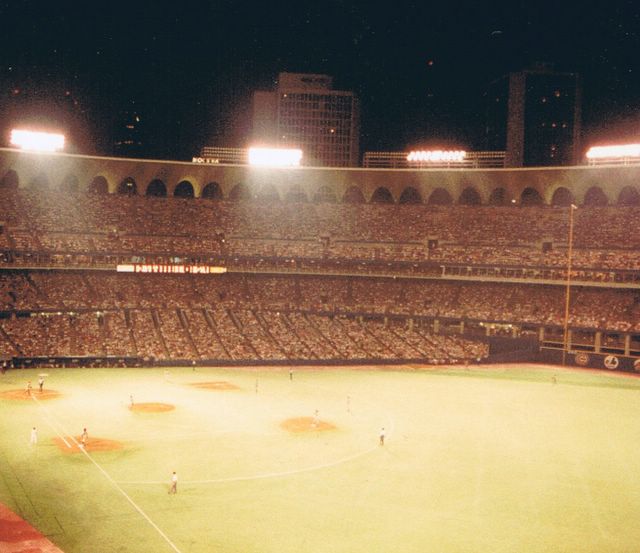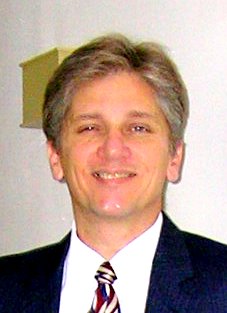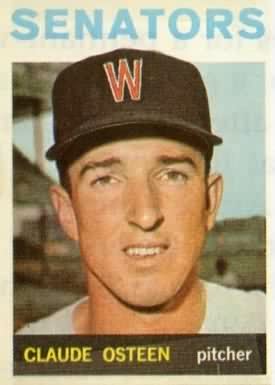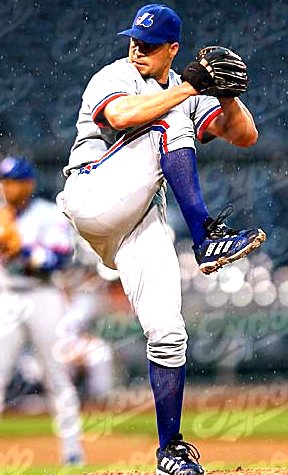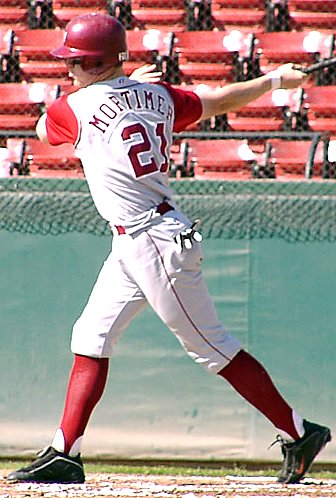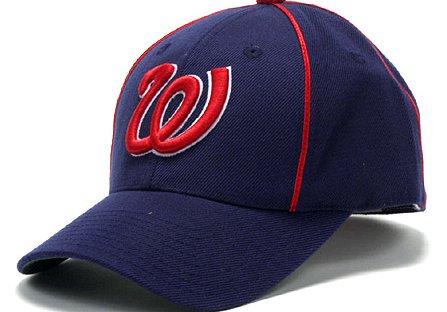Pro [?] Basketball in DC

Rick Barry -- Washington Caps
Oh, I was so excited when I heard the news. The Oakland Oaks of the ABA was moving to Washington, to become the Washington Caps. Sigh. Never meant to be. It was a typical ABA franchise, run on a shoestring, and playing in long forgotten arenas [Washington Colesium]. I never did understand why they kept the green and gold motif in Washington DC.
The next year, Earl Foreman made his intentions known: he wanted to move the Bullets to DC and call them the "Capitol Bullets." How dumb. The name, not the move. The Caps moved south and made the Scope in Norfolk home, and called themselves the Virginia Squires. They signed this kid out of Umass, and he had a decent career. His name? Erving. Julius Eriving, better known as Dr. 'J'
Intimidation to the power of 'N'

Yankee Stadium in the late 1920s
Take a look at this picture I found on the 'net this morning. This is Yankee Stadium in the late 1920s, just after it opened. From the bunting and warmer clothing, I'd guess this is either opening game or the World Series.
Picture the Senators leaving after a game at Griffith Stadium and boarding a train at Union Station for the trip to New York. The next day, they come to Yankee Stadium and walk on to the field for warmups. They crane their necks upward and see that huge upper deck that seems to go on forever. Beyond the right field bleachers were the brownstone walkups that were plastered with stadium adverstising. From homeplate, New York's expansiveness seemed to go on forever.
Soon, the game begins, and 45,000 cheering fans makes it impossible to hear teammates on the field. The chatter from the Yankee dugout becomes incessant. "Bronx cheers" reverberate throughout the stadium. Ruth pokes a homerun inside the foul poul and the crowd goes wild. The Nats have no chance to win.
American Presidents call the oval office the "ultimate" in home field advantage. No way. Yankee Stadium was the ultimate in home field.
Your 1971 Broadcast Team

The WWDC broadcast Team for 1971
Talk about a promotional picture! For part of an ad for WWDC radio in 1971, the radio station dressed their talent in Senators' uniforms. Tony Roberts is on the left [he does the Notre Dame football games now -- quite a step up], Ron Menchine is in the back and Johnny Holiday is on the right. These guys brought me many fond memories over the years.
Bob Short Was So Cheap ....

Denny McLain during his [thank goodness] only year with the Senators
I know it's really hard to tell but ....
Bob Short looked for every possible way to cut expenses during that final season in Washington. I recently read an article by Bob Short's son who said that his father did everything he could to save baseball in Washington.
Right.
If you look very closely at McLain's hat, you can see that the logo looks a little different. It was. Unlike every other major league team, unlike every minor league team, and probably most high school and little league teams, Short had New Era sew a patch on the hat that had the script "W" on it. The "W" was shaped a little differently and the edge of the patch was cut close to the letter to hide the fact it wasn't embroidered.
Let me get this right. Bob Short did everything he could to save baseball in D.C., yet he was already cutting corners when the team placed the cap order in early December.
Right.
Doing What Ted Does Best

Ted Williams showing Mike Epstein the art of hitting
Mike Esptein was one of the best pupils of Ted Williams in 1969. Considered a "can't miss" prospect in the Oriole organization, he never displaced Boog Powell in Baltimore and was traded to the Senators for Pete Richert, and after a subpar 1968, blossomed the following year. Batting only against righties, Epstein batted .278, whacked 30 homeruns and drove in 85 runs. Known as "superjew" to his teammates, he was eventually traded to the Athletics for Don Mincher, a trade that didn't help the Senators.
I remember Epstein hitting into a lot of double plays and being an average fielder. But when he did connect, man he connected. Following the 1969 season, there was a lot of talk about Mike being traded to the Yankees for Joe Pepitone. It was thought that Esptein would draw the Jewish fans to Yankee Stadium.
Bob Short: A Man Both Democrats & Republicans Could Hate
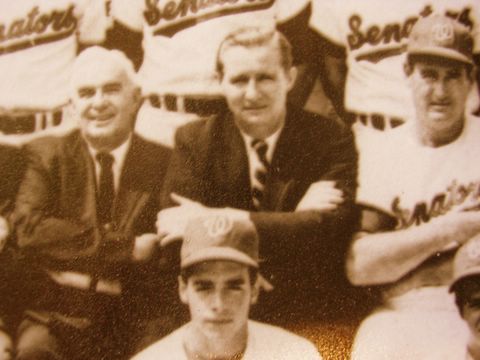
Ed Doherty, Bob [I'll Steal Your Team] Short & Ted Williams
Bob Short as he appeared in the "official" 1969 Washington Senators team photograph [I got it when I was 13]. I google searched for a picture of Short, but there just aren't any/many available. I guess everyone burned them in protest. There was a famous image of him watching a Rangers - Orioles game at Memorial Stadium in 1972. A "large" Senators fan walked right up to his box and held up a "Bob Short" effigy being hung by a noose. Couldn't find it though.
Do you know who Short outbid for the Senators? Bob Hope. Think Hope would have moved the team?
UPDATE:
HERE is the story about the man I mentioned in the story above. Great read.
High Hopes For Senators' Fans
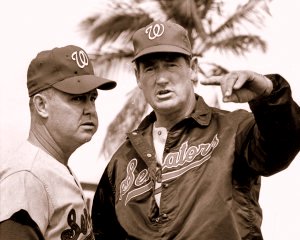
The picture that launched a thousand dreams
Jim Lemon was fired as manager of the Senators after the 1968 season. Bob Short was looking for an immediate draw, and, seeing no key trades that could be made, went after Ted Williams. The word leaked out about a week before the signing. Yeah, right. Ted Williams. Managing the Senators. Uh-huh. We then went on about our business.
I learned about Ted Williams coming to the Senators on Warner Wolf's channel 9 sports broadcast. He had a smile as wide as Montana. Man. Maybe this might finally change our luck.
This picture appeared in the Washington Post that first spring training. It was the first photo any of us had seen of Ted in a Senators uniform. The next day, I saw a picture of Frank Howard with #33 on his back. What? Hondo wore #9. Oh, wait a minute. That was Ted's number in Boston Howard graciously gave Williams his number.
William's magic lasted that one season. That was enough for me. The '69 Senators have provided me a lifetime of memories that help me get through the tough times. Heck, if Eddie Brinkman could hit .266, then I could do anything.
Senator Spotlight: ED BRINKMAN

Ed Brinkman
Eddie Brinkman was the finest fielding shortstop of his generation not named Mark Belanger. Teamed with 3rd baseman Ken McMullen, the left side of the Senator infield was as tight a newborn's bottom. But as good a fielder as Brinkman was, he was that bad a hitter. His batting statistics were horrid. Things changed however, at least for two seasons, in 1969.
New owner Bob Short fired manager Jim Lemon and replaced him with hall of famer Ted Williams. Williams always believed that the sure handed shortstop could be an adequate major league hitter, and spent a great deal of time with him during the '69 Spring Training. Amazingly, Brinkman's batting stance was that of a homerun hitter. He had "warning track power." Williams taught him how to use a bottle bat. The bottle bat had a thin handle and a much thicker barrel, providing more area to hit the ball. It was widely used in the 1920's but unheard of during this period. This was Brinkman's last hope. The previous year, Jim Lemon considered making him a pitcher, his high school position. That never happened. In 1969, Brinkman batted .266, an increase of 79 points. In 197o, he hit .262, maintaining his prowess under the tutelege of the Splendid Splinter.
Following the 1970 season, Brinkman was part of the worst trade in baseball history. Brinkman, starting 3rd baseman Aurelio Rodrieguez, pitcher Joe Coleman and Jim Hannan were sent to the Tigers for Denny McLain, Don Wert, Elliot Maddox and Norm McRae. Just like the movie "Major League," where the Indians owner got rid of all their good players to reduce attendance so she could move the team, so too did Short rid the Senators of their best players. As we all know, they left for Texas following the 1971 season.
Removed from Ted Williams, Brinkman reverted to his old ways, batting .228, .203 and .237 over the next three years. He bounced around the majors before retiring following the 1975 season.
BRINKMAN BITS:
Eddie was a teamate of Pete Rose in high school ... he was signed by the Senators and reached the majors at the age of 20 ... was one of the few six-foot shortstops in the 1960s ... had a horribly low .251 OBP in 1965 [how is that possible??}
The Washington Senators .... By Any Other Name ...

Home of the 1961 Washington Senators. Too bad their home was in Minneapolis!
Calvin Griffith was in a quandary. Against his wishes, the federal government was building him a brand-spanking new, state of the art, top of the line, 45,000 seat D.C. Stadium to replace the decrepit, out of date Griffith Stadium, home to his Senators. Why against his wishes? The only income Griffith had was from the ballclub. He paid no rent at Griffith Stadium, and received all of the parking and concessions income. At the new stadium, he'd have to pay rent, and keep only a miniscule amount of the peripheral income. Griffith wasn't loyal to Washington DC. Griffith was loyal to the Washington on the dollar bill.
The folks from Minnesota came calling. For many years, they had been trying to lure a major league team to the Minneapolis - St. Paul area. The St. Paul Saints, one of two minor league teams in the Twin Cities, moved into Midway Stadium in 1957, a stadium to be easily expanded in hopes of attracting a team to their side of the metroplex. Ultimately, Griffith worked out a better deal with Minneapolis. The city would renovate and enlarge Metropolitan Stadium and charge them rent only after the one millionth fan passed through the turnstiles. Griffith, the first to say, "Show me the mon-ey," moved the Senators, an integral part of our Nation's Capitol since 1901, to Minneapolis to become the Twins in 1961.
Thanks Cal.


